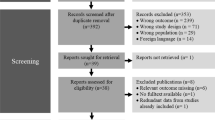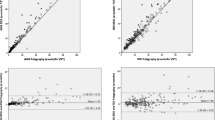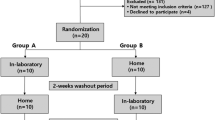Abstract
We designed this study to assess the signal failure and sensor loss of unattended type 2 comprehensive polysomnography (PSG) and compared that with in-lab attended PSG. Type 2 PSG was performed for 41 patients. The signal failure was estimated and compared to the signal failure in 60 patients for the in-lab PSGs. The signal failure in each individual electroencephalographic (EEG) channel, complete EEG signals, electro-oculography (EOG), naso–oral flow, and thoracic belt were significantly greater in the unattended sleep studies. The failure rate for the different signals ranged from 0.128 min in electrocardiography (EKG) to 67.36 min in the thoracic belt signal. However, that did not affect the success rate of the studies. Acceptable scorable data was available in 97% of the performed unattended PSGs. Unattended type 2 sleep studies can be performed for clinical use in the evaluation of sleep disordered breathing with low signal failure and sensor loss if the proper hook-up procedure was followed.
Similar content being viewed by others
References
Young T, Palta M, Dempesy J, Skatrud J, Weber S, Badr S (1993) The occurrence of sleep-disordered breathing among middle-aged adults. N Engl J Med 328:1230–1235
Bahammam A, Rahman AA (2000) Hospital nights utilized for CPAP titration in obstructive sleep apnea syndrome patients in the absence of a proper sleep disorders center. Ann Saudi Med 20:83–85
Ferber R, Millman R, Coppola M, Fleetham J, Murray CF, Iber C, McCall V, Nino-Murcia G, Pressman M, Sanders M, Strohl K, Votteri B, Williams B (1994) ASDA standards of practice: portable recording in the assessment of obstructive sleep apnea. Sleep 17:378–392
Kapur VK, Rapoport DM, Sanders MH, Enright P, Hill J, Iber C, Romaniuk J (2000) Rates of sensor loss in unattended home polysomnography: the influence of age, gender, obesity, and sleep-disordered breathing. Sleep 23:1–7
Rechtschaffen A, Kales A (eds) (1968) A manual of standardized terminology, techniques and scoring system for sleep stages of human subjects. National Institutes of Health (NIH) publication number 204, US Government Printing Office, Washington, DC
American Sleep Disorders Association, Atlas Task Force (1992) EEG arousals: scoring rules and examples. Sleep 15:174–184
Chesson AL, Berry BR, Pack A (2003) Practice parameters for the use of portable monitoring in the investigation of suspected obstructive sleep apnea in adults. Sleep 26:907–913
Ancoli-Israel S, Mason W, Coy TV, Stepnowsky C, Clausen JL, Dimsdale J (1997) Evaluation of sleep disordered breathing with unattended recording: the night watch system. J Med Eng Technol 21:10–14
White DP, Gib TJ, Wall JM, Westbrook PR (1995) Assessment of accuracy and analysis time of a novel device to monitor sleep and breathing in the home. Sleep 18:115–126
Whittle AT, Finch SP, Mortimore IL, MacKay TW, Douglas NJ (1997) Use of home sleep studies for diagnosis of the sleep apnoea/hypopnoea syndrome. Thorax 52:1068–1073
Fry J, DiPhillibo MA, Curran K, Goldgerg R, Baran S (1998) Full polysomnography in the home. Sleep 21:635–642
Portier F, Portmann A, Czernichow P, Vascaut L, Devin E, Benhamou D, Cuvelier A, Muir JF (2000) Evaluation of home versus laboratory polysomnography in the diagnosis of sleep apnea syndrome. Am J Respir Crit Care Med 162:814–818
Acknowledgements
I would like to thank the technologists at the Sleep Disorders Center, Mrs. Marila Bien, Ms. Eden Pierella, and Mrs. Saji Thomas for their great help. This study was supported by a grant from King Abdulaziz City for Science and Technology (KACST), Riyadh, Saudi Arabia.
Author information
Authors and Affiliations
Corresponding author
Rights and permissions
About this article
Cite this article
BaHammam, A.S. Signal failure of type 2 comprehensive unattended sleep studies in patients with suspected respiratory sleep disordered breathing. Sleep Breath 9, 7–11 (2005). https://doi.org/10.1007/s11325-005-0001-6
Published:
Issue Date:
DOI: https://doi.org/10.1007/s11325-005-0001-6




